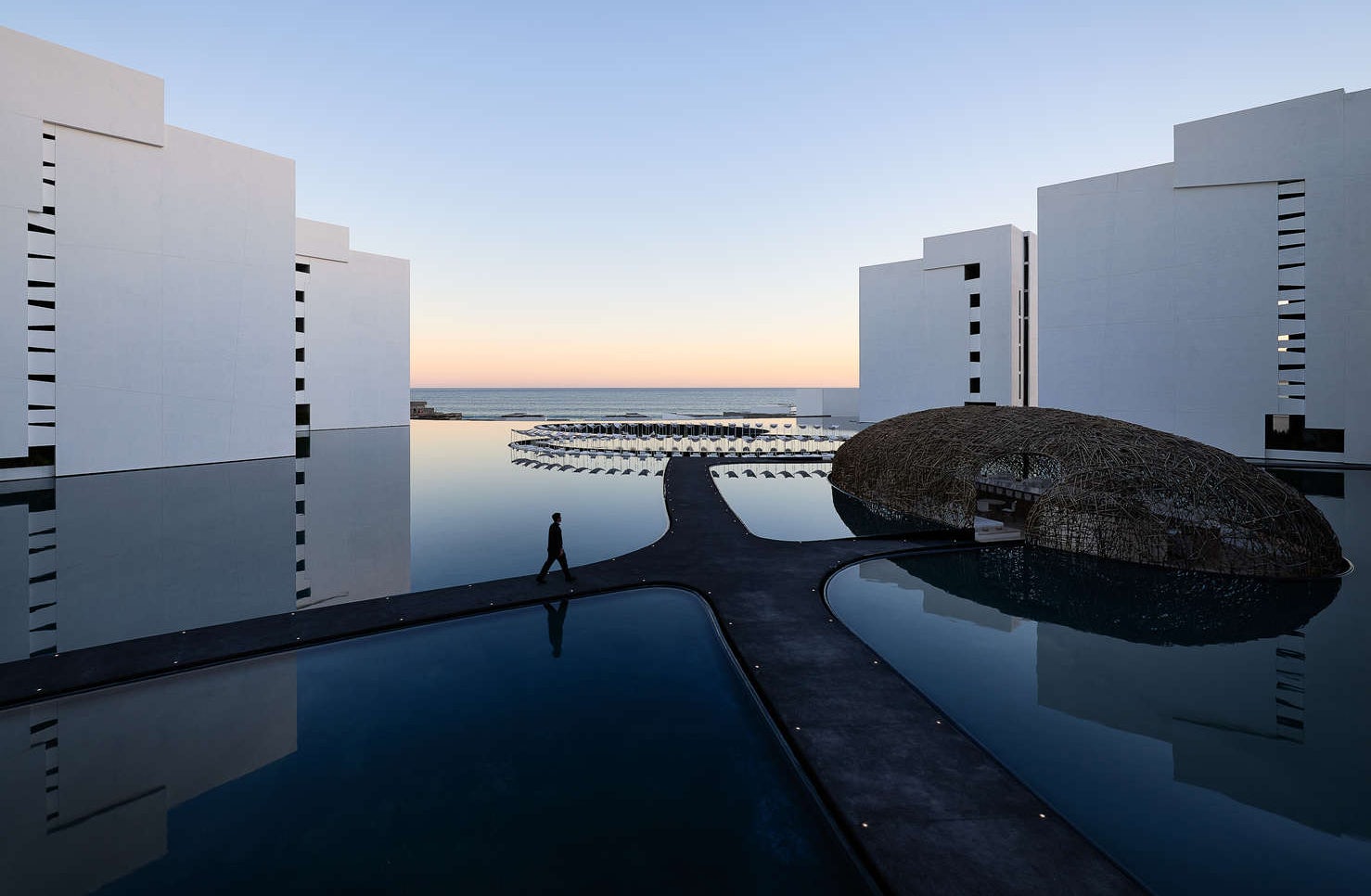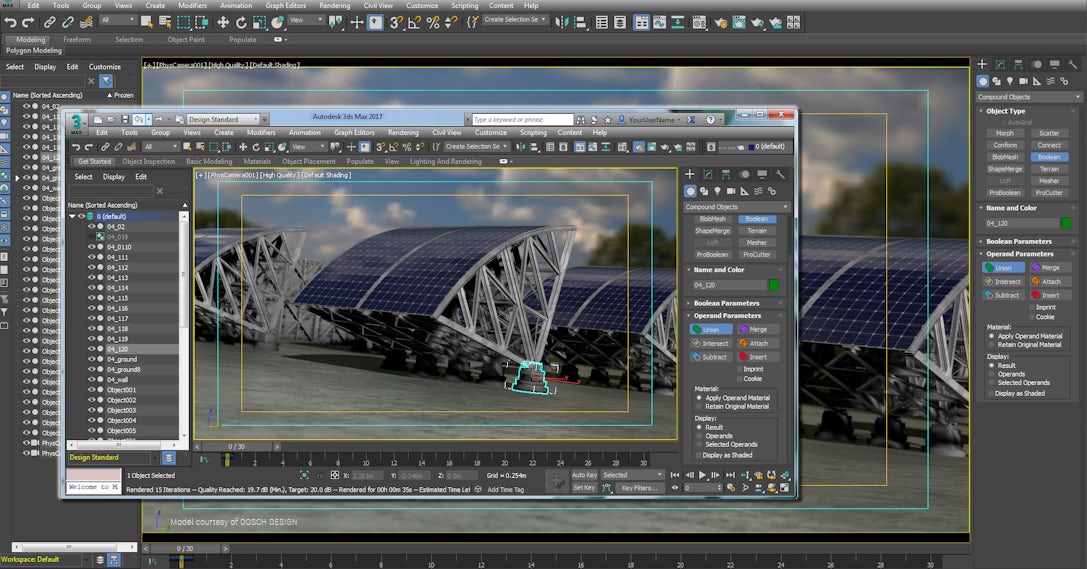Architects: Showcase your next project through Architizer and sign up for our inspirational newsletter.
As architectural backdrops go, the Pacific coast of North and Central America must be one of the most inspirational.
Here, the sun sets over the ocean, turning from yellow to orange and finally to red as it sinks below crystal clear waters. This scene invites the gaze of everyone from Canada to Panama, and for architects designing major buildings along this coastline, this rippling horizon is a natural focus point. It is no wonder, then, that two buildings sharing this remarkable coastal condition also possess a common formal language — and each are stunning in their own ways.
Mar Adentro’s idyllic visualization video matches closely with the completed building. Having trouble viewing on mobile? Click here.
Completed in 2016, the Mar Adentro hotel and spa in San José del Cabo, Mexico, is a luxury resort designed for tourists and travelers looking for the ultimate in relaxation — but comparisons can be drawn with a very different project, one designed for students, researchers and professors. The symmetrical plan of Louis Kahn’s Salk Institute — a two-hour, 1,000-mile flight north in Southern California — addresses the Pacific Ocean with a reverence that transcends typologies, standing as a temple to education and as a frame for the wonders of nature.

Salk Institute by Louis Kahn, La Jolla, Calif.; image via the Salk Biological Institute

Mar Adentro by Miguel Ángel Aragonés, San José del Cabo, Mexico
“I believe that the greatest virtue of architecture is the generation of sensations through space on a series of planes that are found within the realm of sensitivity,” explains architect Miguel Angel Aragonés, designer of the Mar Adentro resort. “I believe this capacity becomes still greater when your surroundings allow you to meld into them, forming thus part of your own space; in this sense, I wanted to take that horizon and bring it into the foreground.”
Both Mar Adentro and the Salk Institute feature an open-air plaza that seeks to connect with the ocean, but the projects differ in the way they achieve this. Kahn’s travertine marble plaza is — in the words of Luis Barragán — a “façade to the sky,” its solidity juxtaposed with the fluid nature of the adjacent water, celebrating the difference between manmade and natural conditions. By contrast, the open space of Mar Adentro allows this fluidity to flood in, its reflecting pools creating a blurred boundary between the buildings and the ocean in a highly immersive fashion.
In this respect, Aragonés’ external space can be viewed as an inversion of Kahn’s plaza: While the Salk Institute’s minimalist court is divided by a slender channel of water, Mar Adentro’s liquid plane is traversed by a gently curving pedestrian walkway that leads toward the ocean.

Salk Institute by Louis Kahn, La Jolla, Calif.; image via the Salk Biological Institute

Mar Adentro by Miguel Ángel Aragonés, San José del Cabo, Mexico
The two projects also share a similar relationship between volume and void, with façades angled to frame the view and emphasizing the perspective to draw one’s eye toward the horizon. However, the buildings that achieve this effect are composed in very different ways: While Kahn’s concrete forms are firmly embedded within their environment, Aragonés’ white hotel modules sit lightly upon the surface of the land, appearing to float upon the adjacent reflecting pools.
This aesthetic owes much to the buildings’ modular, prefabricated construction, as Aragonés explains: “Each room was built in a factory … We built the entire interior structure and sent it in boxes across the sea to its destination, where it was assembled on site by local hands.” This construction technique also allowed for a great degree of design flexibility. “Our project can be constructed entirely through this process,” says the architect, “employing a module whose versatility allows it to be divided or added onto, thus becoming autonomous or dependent on another structure.”

Mar Adentro by Miguel Ángel Aragonés, San José del Cabo, Mexico
Each hotel room in Mar Adentro is oriented to address its surroundings, aiming to harness the same atmosphere of serenity that Kahn sought for the individual study spaces of the Salk Institute. “Mar Adentro is a kind of Medina that opens out onto the sea,” says Aragonés. “Each floating volume contains interiors that form, in turn, independent universes. Each room visually contains a piece of the sea. No one can resist gazing out at it.”
These projects are wholly different in terms of typology, material palette and construction technique, yet they share a common bond: that between architecture and the ocean. While they were completed half a century apart, both Kahn and Aragonés have proven that the draw of nature is timeless and when a project defers to its surroundings, it is all the richer for it.
Architects: Showcase your next project through Architizer and sign up for our inspirational newsletter.









